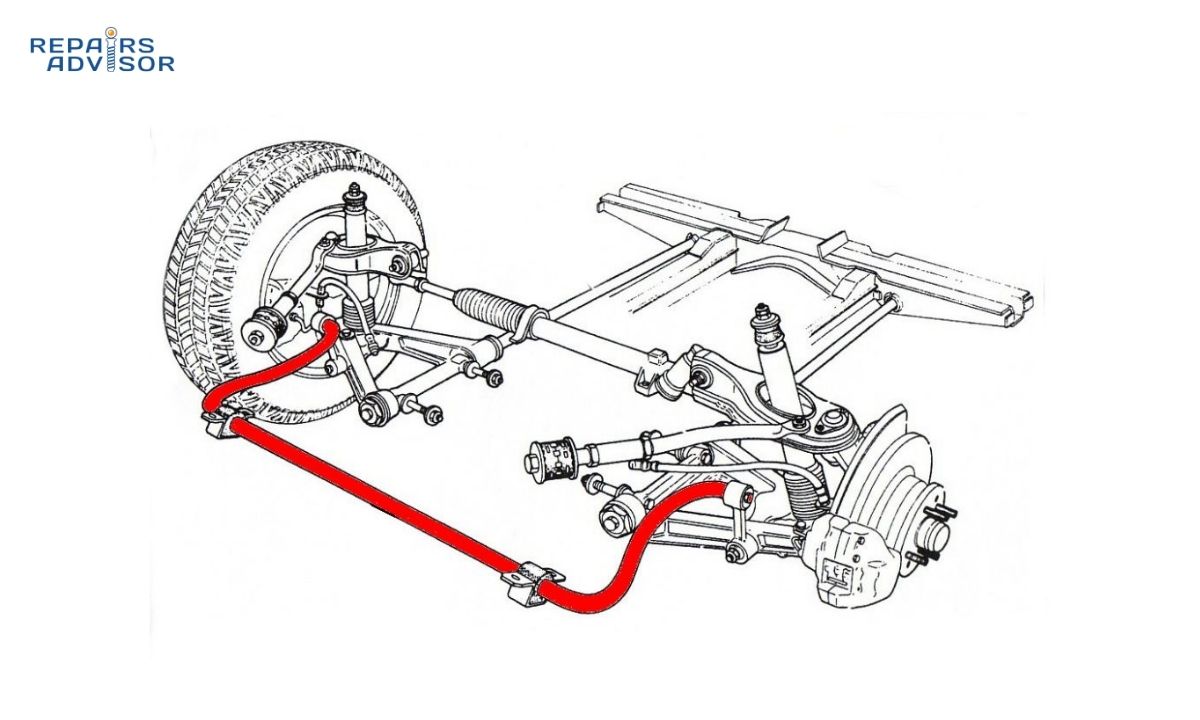Ever notice how your car stays relatively flat when you take a turn, instead of feeling like it’s about to tip over? That’s largely thanks to your front sway bar (also known as an anti-roll bar or stabilizer bar). This is a solid metal bar that cleverly connects both sides of your vehicle’s suspension for a given axle. Its primary job is to reduce body lean (or “body roll”) when you’re cornering, ensuring better handling, stability, and a more controlled ride.
When you turn, the vehicle’s weight shifts, causing one side of the suspension to compress and the other to extend. The sway bar resists this twisting motion, effectively transferring force from the outer (compressed) wheel to the inner (extended) wheel, keeping the car’s body flatter. But when this crucial component, or its associated parts, start to fail, you’ll definitely notice a difference in how your car handles!

How to Spot the Warning Signs of a Bad Front Sway Bar
Catching a failing front sway bar or its components early can make a big difference in your car’s feel and safety. Here are the key symptoms to watch out for:
- Abnormal Noise When Going Over Bumps:
- This is one of the most common and annoying signs. If you hear a clunking, knocking, rattling, or squeaking noise coming from the front suspension, especially when driving over bumps, potholes, speed bumps, or uneven surfaces, it could indicate an issue with your sway bar. This often points to worn sway bar bushings (where the bar mounts to the frame) or worn sway bar end links (which connect the bar to the suspension components). The worn parts allow excessive movement, causing metal-on-metal contact or creaking.
- Excessive Body Lean When Cornering:
- This is the most direct functional symptom. If your car feels like it’s leaning much more than usual when you take a turn, especially at moderate to higher speeds, your front sway bar might be failing. Its ability to resist body roll is compromised, making the car feel less stable and confident through corners. You might even feel a noticeable loss of control or a “floaty” sensation.
- Reduced Handling and Responsiveness:
- Beyond just lean, a failing sway bar can make your car feel generally less responsive and harder to control when maneuvering. The steering might feel less precise, and the car might react sluggishly to your inputs, making it feel less secure, especially during quick lane changes or evasive maneuvers.
Front Sway Bar Repair Advice (Often Simple Fixes!)
When diagnosing sway bar issues, it’s important to understand that the bar itself rarely fails unless subjected to extreme impact. More often, the problem lies with its smaller, more common wear parts.
- Sway Bar End Links are a Common Culprit:
- These small rods connect the sway bar to your car’s control arms or struts. They have ball joints or bushings at either end that wear out, causing that notorious knocking or clunking noise over bumps. Replacing these sway bar end links is a very common and often straightforward repair that can resolve many suspension noises.
- Don’t Forget the Sway Bar Bushings:
- The sway bar itself is held to the vehicle’s frame by rubber sway bar bushings. These can also wear out, leading to squeaking or knocking noises as the bar rubs or shifts within its mounting points. Replacing these bushings is another common repair.
- Alignment Usually Not Needed (Unless Other Components Removed):
- Good news here! Unlike many other suspension repairs, replacing just the sway bar, its bushings, and/or its end links should generally NOT require a wheel alignment. This is because these components typically do not directly affect the wheel’s alignment angles (camber, caster, toe). However, if other suspension components that do affect alignment (like control arms or struts) need to be removed to access the sway bar components, then a wheel alignment would be necessary afterward. Your mechanic will know best for your specific situation.
Your Repairs Advisor’s Take:
Your front sway bar is a vital piece of the puzzle for stable and confident handling. Ignoring symptoms of a bad sway bar or its components can lead to excessive body roll, reduced control, and a less safe driving experience, particularly when cornering. While the sway bar itself is robust, its end links and bushings are common wear items that can make a big difference in how your car feels.
Don’t settle for a car that feels unstable or noisy! Issues with your sway bar components are often relatively straightforward to diagnose and repair.For accurate diagnosis and safe repair, always consult a qualified automotive mechanic. They can pinpoint the exact source of the noise or excessive lean and get your car feeling stable and controlled on the road again. Get your confident handling back – schedule a suspension inspection today!
